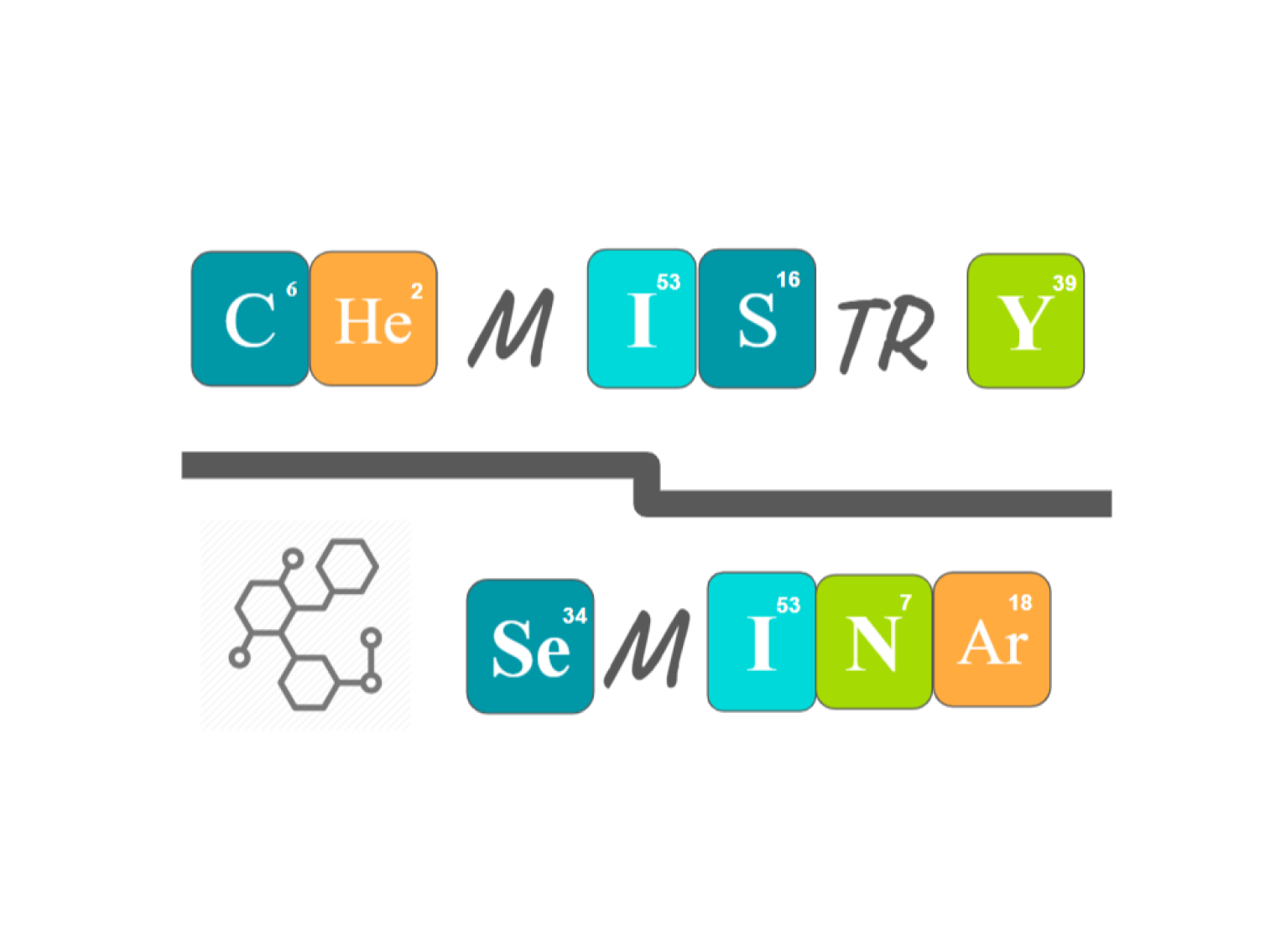Chemistry Seminars
Fall 2025 Speakers & Dates:
| Location: | Time: |
|---|---|
| 126 Schrenk Hall Rolla, MO 65409 |
4:00 p.m. |
- * Time Change and/or Location
- August 25, 2025 | Reserved
- September 1, 2025 | Labor Day Holiday: No Seminar
September 8, 2025 | Reserved - September 15, 2025 | TBD
- September 22, 2025 | TBD
- September 29, 2025 | TBD
- October 6, 2025 | TBD
- October 13, 2025 | TBD
October 20, 2025 | TBD
October 27, 2025 | TBD
- November 3, 2024 | TBD
- November 10, 2025 | Sara McCauley, Graduate Student, Chemistry, Missouri S&T (Dr. Schuman)
Development of Phosphonate-Containing Polymers for Conformance Control in Geothermal Reservoirs - November 17, 2025 | Adam Willett, Graduate Student, Chemistry, Missouri S&T (Dr. Schuman)
Organic Molecules as Cathodic Corrosion Inhibitors for Steel Substrates - November 24, 2025 | Thanksgiving Holiday - No Seminar
- December 1, 2025 | TBD
- December 8, 2025 | TBD

The S&T Department of Chemistry presents Colloquium and Chemistry Seminar as co-equals mindful of their different purposes. Chemistry seminars will generally address a specialized audience and their content will be of a modest scope. Chemistry Seminars will come in various formats and may address several purposes. There will be talks that last for the entirety of the time, which will be given by 3rd or 4th year graduate students as part of their Ph.D. program and covering the scope of their research. Additionally, there will be seminars presented by invited guest speakers from other departments or other universities with the primary aim of fostering and supporting research collaboration. The final category will allow 1st or 2nd year graduate students, and potentially undergraduate students, to refine their presentation skills and obtain audience feedback by giving 25 minute research presentations. Constructive discussion is always encouraged in all Chemistry Seminars and speakers are asked to leave some fifteen percent of their time for a lively Q&A session. Each seminar is announced on the S&T University Calendar.
If you are a student who needs to sign up to present seminar, please email the Chemistry Seminar Coordinator, Dr. Amitava Choudhury.
Past Seminars Spring 2023 and Prior

Follow Chemistry